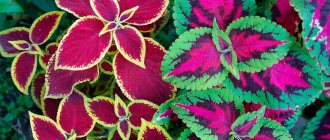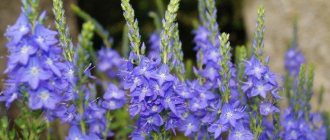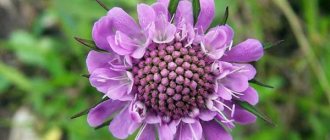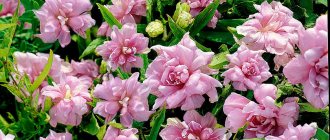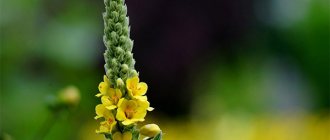Photo: diz-cafe.com Coleus is an ideal home flower, which combines amazing endurance with unusual beauty. It is valued not for its flowers, but for its original multi-colored leaves with patterns on the plates. If you don’t like wildly blooming flowerpots and all the tricks of caring for them, coleus will become your faithful friend and ally!
general information
The colloquial name for coleus, which it received for the expressive shape of its leaves, is weed. In the apartment the flower grows like an unpretentious perennial, but in the garden it will not survive the winter. And all because in nature it lives in Africa and Asia - regions with hot climates and no frost.
Coleus was brought to Europe on purpose and they immediately started breeding it. The first wild species amazed sailors so much that they brought them straight from the island of Java. So, since the nineteenth century, the popularity of the flower in the world has grown rapidly.
Photo: domashniecvety.ru
Coleus leaves can be the most unexpected colors: orange, red, burgundy. Most often, they combine several shades at once: for example, grassy green with purple. Together with the unusual shape of the plates, it looks very impressive and exotic!
Although it doesn't bother gardeners too much, coleus does have flowers. They are just small, faded and inconspicuous, whitish or blue. They are not particularly attractive, so it is better to remove the buds at the bud, otherwise they will draw almost all the nutrients onto themselves. Because of this, during flowering, the coleus leaves become smaller and fade.
Photo: flo.discus-club.ru
Coleus: methods of propagation and planting features
Coleus can be propagated using cuttings during regular pruning or by seeds.
Propagation by seeds
Seeds for propagation can be obtained from a house plant after flowering. Seeds are sown in the spring in the ground for adult coleus or for seedlings:
- Cover the ground with film or a jar (bottle).
- Seeds do not need light for germination, but the temperature is required within 18...20 °C.
- When 2 leaves appear, it’s time to pick up the coleus.
- For watering from this time, you need to add nitrogen-based fertilizers to stimulate growth.
- The plant is transplanted into an adult pot with 6 leaves.
- It is necessary to fertilize a young plant with nitrogen before the flowers appear, and then switch to mineral fertilizers. To preserve the strength of the coleus, the first flowers are cut off immediately.
Propagation by cuttings
In the spring, when pruning the plant, the apical areas with 3–4 pairs of buds are selected. The lower leaves are removed from the stem, leaving only the upper ones. The cuttings are placed in clean water on the window. You can expect roots to appear in 2 weeks.
Coleus species
There are about one and a half hundred species of coleus, and almost all of them have decorative leaves. Beautifully flowering varieties are rare, but they are almost not common in our country. Two main species are grown in culture - Coleus Blume and Verschaffelta.
Coleus Blume
This is a perennial herbaceous species with oblong ovate leaves. Its plates are lowered and painted in all shades of green, pink, red and burgundy. A characteristic feature is textured tetrahedral stems. Popular varieties and hybrids are yellow-green Butterfly, luxurious scarlet Volcano, spectacular multi-colored Saber and delicate light green Golden Bedder.
Photo: vrn-agroservis.ru
Coleus Verschaffelta
In essence, Coleus Verschaffelt is almost no different from Blume. Except that it is larger, with large leaf plates and an expressive velvety surface. The most common color combination is the notorious duet of green and purple.
Photo: etsy.com
Hybrid coleus
Different varieties of hybrid coleus are very different from each other, but some features are preserved. They necessarily have oppositely growing leaves with an uneven edge: wavy, curly, jagged or dissected. The stems are always square in cross section and elongated, erect.
Photo: lph-zarechye.rf
Ampelous coleus
These are varieties with thin shoots that fall from hanging baskets and planters. The same coleus are excellent for landscaping fences on terraces and balconies. Among them there are very tiny hybrids up to 30 cm with multi-colored hanging leaves.
Photo: subscribe.ru
Succulents (85 photos): types, care features
Dimensions of an adult plant
In varieties of the “dwarf” type, the plant height reaches 10-15 cm, and in tall bushes 50-80 cm.
The leaf size varies from small, no more than 3 cm in diameter, to large. The shape is not very different, mostly oblong-oval or elongated towards the end. The edge is raised, indented from finely toothed, wavy, to deeply incised, curly.
Coleus is actively growing, which leads to rapid growth; the plant must be replanted in a timely manner.
You can increase the lifespan and decorativeness of the plant through regular pruning and renewal of the bush.
Coleus care
Coleus is not only very beautiful, but also grows quickly at home. It is also useful because the leaves contain natural phytoncides that purify and refresh the air.
Temperature
Coleus loves warmth, so it feels best at a temperature of 20 degrees. It will not survive the winter in open ground, so it is grown in the garden as an annual. In an apartment, coleus feels good at a temperature of 16 degrees. Be sure to make sure that even in frost it does not fall below 12 degrees.
Photo: coleusy.ru
Lighting
For coleus to be truly bright and unusual, it needs as much light as possible. Varieties with white, yellow or red leaves tolerate even direct rays well, unlike green and purple ones. If you have south-facing or east-facing windows, choose them.
Photo: freyja.su
Watering
For watering, be sure to leave the water for at least a day in a warm place so that it is slightly warmer than the air temperature. In summer, make sure that only the top layer of soil dries out, and in winter, reduce the frequency. But do not allow the coma to dry out completely, otherwise the leaves will react almost instantly and become painful.
Coleus loves to be sprayed because it grows in hot, humid climates. Even in winter, it is better that the humidity in the room is slightly increased - for example, as in the kitchen or bathroom. For spraying, use the same warm, soft water as for irrigation.
Photo: foren.germany.ru
Soil and fertilizer
Coleus is absolutely unpretentious to the type of soil, so any nutrient mixture will do. At the beginning of the period of active growth, use mineral or organic supplements. Add a weakly concentrated solution once a week, and in winter - once a month and at half the concentration.
Photo: zen.yandex.by
Reproduction
Coleus propagates equally well by seeds and cuttings, because it grows quickly. At the end of winter, scatter the seeds evenly in a flat box and do not sprinkle on top. Go long distances because they have a very high germination rate.
Spray the soil with a spray bottle, set the temperature to 20 degrees and find a brighter place. The seedlings will germinate quickly, so don’t put off picking. If they no longer fit in the container, they may begin to wilt. To ensure that coleus bushes well from the first months, pinch it immediately after transferring it to a separate pot.
Coleus cuttings are replanted in spring and summer due to the fact that the flower is very heat-loving. To do this, the branches are cut off at the end of winter and transferred to nutritious flower soil. If you put them in water, hurry up and transplant the cuttings immediately after the roots appear.
Photo: domashniecvety.ru
Kalanchoe (60 photos): types and features of care
Coleus Solar flare in Moscow
- Address: Moscow, Southern administrative district, Orekhovo-Borisovo Yuzhnoye district
Coleus varietal Solar flare. Elegant contrasting leaves will decorate your home, office or garden. Rooted cuttings are available, the price depends on the size, from 50 to 100 rubles. There are other varieties of coleus, see my profile.
Unfortunately, this advertisement is no longer relevant. You can see similar current advertisements from the current category a little lower, or go to the category using the link: Indoor flowers and plants in the city of Moscow. You can also use the site search form.
I'll give it back. Due to the large number of plants of this variety, I am giving away the surplus. Pickup from Cherkizovskaya. Come with your own container (bags, cups) Achimenes with unique and very unusual.
Moscow city – Indoor flowers and plants
I'll give it back. In view of the large number of these rhizomes, I am giving away the surplus. Achimenes Last Dawn (S.Saliba 2011) Double variety with wavy edges and specks on the petals. Color varies from fuchsia to yellow.
Moscow city – Indoor flowers and plants
The stunning long striped leaves of Chlorophytum are very attractive. .In addition, it produces long hanging vines with babies and flowers at the ends. .And this adds decorativeness to this.
Moscow city – Indoor flowers and plants
Beautiful medicinal Aloe, a thornless cactus (succulent). Minimal care. Watering, fertilizing, spraying. Lighting - from direct rays to partial shade. Suitable for a gift. I will pack and deliver to.
Moscow city – Indoor flowers and plants
Due to the move, I will give it away for free for replanting without pots or sell it with pots. There are 6 plants. Zelenograd 16 microdistrict.
Moscow city – Indoor flowers and plants
A delightful indoor plant. Likes frequent watering, partial shade, fertilizers for decorative foliage plants or universal ones. You can spray amazing light green foliage.
Moscow city – Indoor flowers and plants
Indoor tree with large green leaves. A long-time favorite of all. Prefers diffused light or partial shade. Regular watering in summer and moderate in winter. Leaves are sprayed. Feeding -.
Moscow city – Indoor flowers and plants
I offer rooted cuttings of Variegated hibiscusRed double hibiscus
Moscow city – Indoor flowers and plants
Selling a cactus with a baby.
Moscow city – Indoor flowers and plants
Euphorbia spurge (Euphorbia) for sale. Price from 50 to 300 rubles, depending on the size of the flower. I will give away the seeds for FREE.
Moscow city – Indoor flowers and plants
Pest and disease control
If the leaves of indoor coleus begin to suddenly lose color, most likely they are not getting enough sun. But there is also the opposite problem: unexpected white spots can turn out to be burns. This happens more often with young, vulnerable plants that are not yet accustomed to the daily routine.
Brown spots appear due to lack of moisture in the air, so do not forget about preventive spraying. Unexpected leaf fall is a sure indicator of nutritional deficiency. And if the flower begins to stretch too high, it needs preventive pinching and additional lighting.
Decorative coleus leaves are not very attractive to pests. But sometimes spider mites, whiteflies or aphids appear, so inspect the plants periodically. The affected flower must be urgently isolated from healthy ones and treated with insecticides.
Photo: greenhouse.cornell.edu
Dracaena (70 photos): types and features of care
Coleus – photo
It is simply impossible to go through all the varieties and shades of coleus at one time. But we did our best and prepared a photo selection to show you its versatility!
Photo: botanichka.ru
Photo: oir.mobi
Photo: trizio.ru
Photo: krsk.au.ru
Photo: setafi.com
Photo: shawnacoronado.com
Photo: rastenievod-007.blogspot.com
Photo: artfile.ru
Photo: sady-msk.ru
Photo: sytycd.ru
Photo: kashalot.com
Photo: domashniecvety.ru
Photo: botanichka.ru
Photo: saddrakona.ru
Photo: zen.yandex.ru
Photo: plantasonya.com.br
Photo: sady-msk.ru
Photo: telemetr.me
Photo: solo-semena.ru
Photo: plantorama.ru
Photo: greengarden34.ru
Photo: pinterest.ru
Photo: gardennews.ru
Photo: ecologia.chernbib.ru
Photo: pinterest.ru
Photo: greenlab-shop.ru
Did you like the post? Subscribe to our channel in Yandex.Zen, it really helps us in our development!

